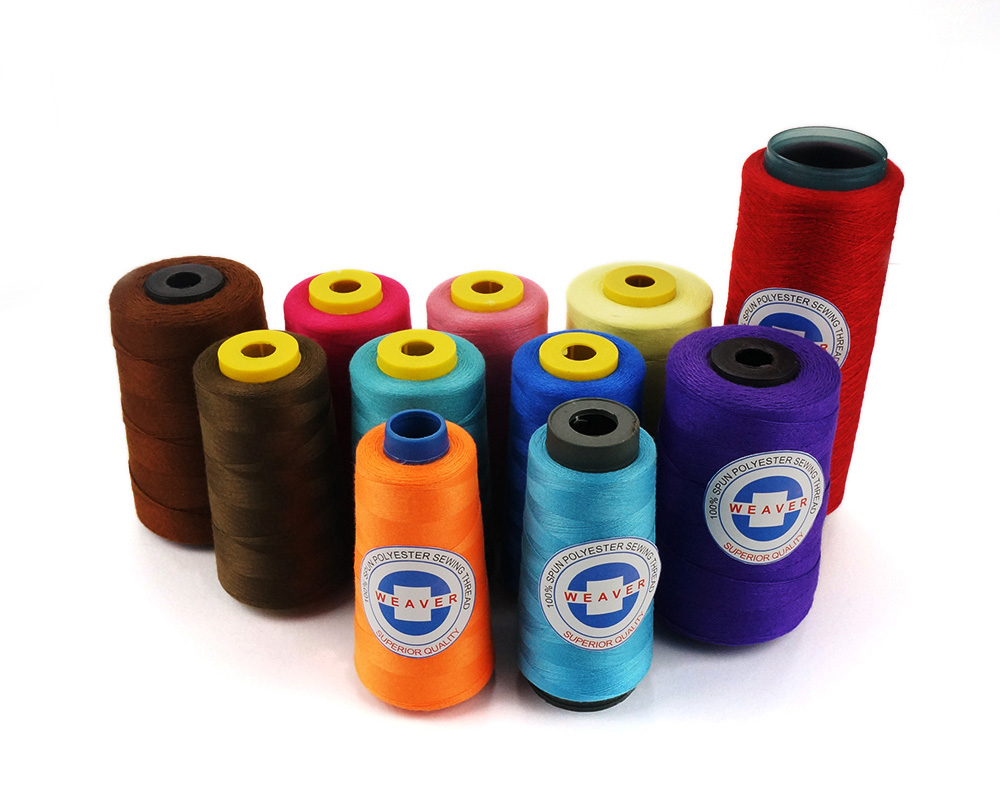Calculation method of sewing thread dosage
As the price of textile raw materials rises, the price of sewing thread, especially high-grade sewing thread, is also rising. However, the current calculation method of sewing thread consumption in garment enterprises is mostly based on production experience estimation, and most enterprises often oversupply sewing thread and do not realize the value of sewing thread management.
Calculation of sewing thread dosage!
I. Calculation method of sewing thread dosage
The calculation of sewing thread quantity is obtained by the common estimation method of enterprises, that is, the length of sewing thread is measured by CAD software and the total length is multiplied by a coefficient (generally 2.5 ~ 3 times of the total length of sewing thread).
Consumption of stitches in a garment = sum of consumption of stitches in all parts of the garment × (1 + attrition rate).
The amount of sewing thread cannot be accurately obtained by estimation method, and there are two scientific methods for calculating the amount of sewing thread:
1. Formula method
The principle of formula method is to use the method of mathematical geometric curve length for the wire trace structure, that is, to observe the geometric shape of the coil that is cross-connected in the seam material and calculate the consumption of a circular line by using geometric formula.
By calculating the length of a stitch coil (including the stitch coil length + the amount of thread used at the stitch intersection), it is converted to the amount of thread used per meter of stitch, and then multiplied by the overall stitch length of the garment.
Formula method combining the stitch density, sewing the material thickness, the yarn count, the kerf width of sewing and stitch, so the formula method is a more accurate method, but the use of relatively complex, garment sewing process, of variety of specifications, design, thickness of sewing the material (cloth), thread count, stitch density and so on have very big different, this for calculating too much inconvenience, So companies basically don’t.
2. Stitch-thread length ratio
Stitch to thread length ratio, that is, the ratio of stitch length to consumed thread length. This ratio can be calculated according to actual production measurement or formula method. There are two methods of measuring the length of seam and stitch.
Length fixing method: before starting sewing, measure a certain length of sewing thread on the pagoda line and make color marks. After sewing, measure the number of stitches formed by this length, so as to calculate the thread consumption of stitches per meter long.
Stitch length method: first sew with different thickness of seam material, and then cut the seam shape of a better section, the stitches were carefully disassembled, measured its length or weight, so as to convert the amount of thread per meter long seam (length or weight).
II. The significance of accurate calculation of dosage:
1 , The amount of sewing thread is an important factor for enterprises to calculate the production cost of clothing;
2, By calculating the sewing thread usage, the waste and backlog of sewing thread can be reduced. Reducing the usage can save the inventory area and reduce the inventory pressure for enterprises, thus reducing the production cost and maximizing the profit space;
3, Assessment of sewing thread consumption can improve employees’ awareness of sewing specifications and quality;
4, By calculating the amount of sewing thread, workers can be reminded to change thread in time. In the case that stitches are not allowed in open thread parts such as jeans, the amount of thread used should be carefully calculated to reduce the slack caused by insufficient stitches and thus improve production efficiency;
Because “stitch-thread length ratio” is relatively simple to calculate the amount of sewing thread, and the calculation result is accurate, it is widely used in garment manufacturing enterprises.
III. Factors affecting sewing thread dosage
The amount of sewing thread consumption is not only closely related to the length of the sewing pattern, but also closely related to the thickness and twist of the sewing thread itself, the structure and thickness of the fabric, and the density of the needle code in the sewing process.
However, due to the variability and flexibility of reality, the calculation results of sewing thread have a large deviation. Other main influencing factors are as follows:
1, the elasticity of fabric and thread: seam material and thread have a certain elasticity, the greater the elastic deformation, the greater the influence on the calculation of the amount of thread. In order to make the calculation result more accurate, it is necessary to add correction coefficient to adjust the fabric which is too thick and too thin, special structure and special material.
2, output: in the case of large production quantity, due to the gradual strengthening of workers’ proficiency, the proportion of loss will be relatively reduced.
3, after finishing: fabric or clothing washing ironing and other processing will cause the problem of clothing shrinkage, need to be appropriately added or reduced.
4. Staff: In the process of using stitches, artificial errors and consumption are caused by different operating habits of staff. The consumption is determined according to the technical situation and practical experience of the factory, and this waste can be reduced through correct operation guidance.
Garment industry competition is becoming more and more fierce, enterprises should have a suitable sewing thread calculation method, to help the management of sewing thread, to provide reference for saving production cost.
Post time: Sep-06-2021




